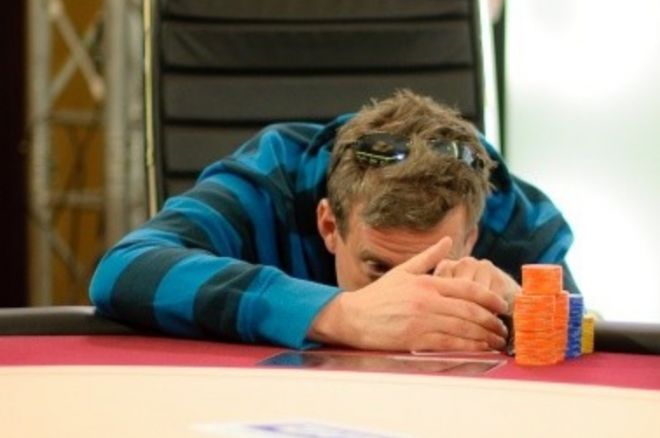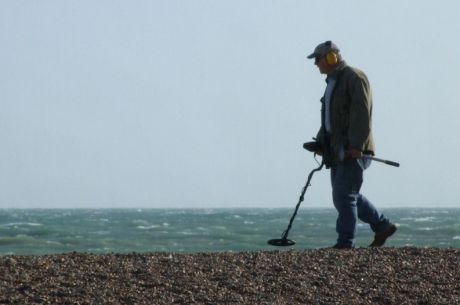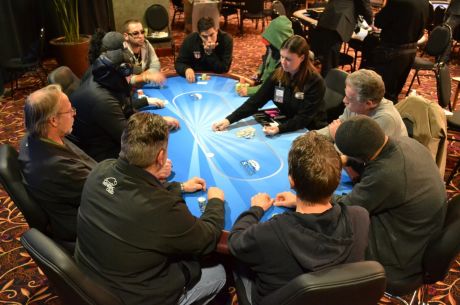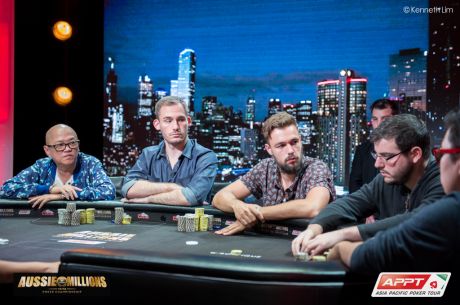Cash Advances, Vol. 3: Avoiding Phantom Implied Odds

Carlos Welch returns with another installment of his Cash Advances series in which he shares cash game hands illustrating some advances in his play.
The Hand
It’s my regular $1/$2 game. The effective stacks are $250. The under-the-gun player (UTG) is overly loose and aggressive. He straddles for $5 and I call with 5♠5♣ in the seat to his immediate left. He is the type of player whom I expect to raise his straddle and often bet three streets with his entire range. My goal in this game is to play as many pots with position on him as possible.
The action folds around to my buddy on the button (BTN). He raises to $20 and my UTG target surprisingly folds. This is not something he does very often.
Now I am faced with a decision to call $15 more into a pot of $33 with about $230 effective in the stacks behind. My hand will flop a set roughly 1 in 8.5 times. This means that at a minimum, I need to be getting 7.5-to-1 implied odds to make this call profitable. Considering that I don’t win a big pot every time I flop a set, I demand a better price than that. I’ll usually call if I am getting 10-to-1. In this case, I am getting even more than that.
To invest $15 more, then, I want to average at least a $150 return, of which $33 is already in the pot. All I would have to do is eventually get roughly half of my remaining stack in on average to make the call profitable. These are pretty decent numbers to be faced with when you are closing the action and hoping to flop a set. A lot of players would find an easy call here.
I folded.
The Advance
On paper, this looks like a snap call. This time last year, I would have made it without much thought. Nowadays, I am able to think more intelligently about these spots and consider more than just the immediate and apparent implied odds when set mining. So why did I fold?
In a nutshell, the wrong guy raised.
I would have been willing to call a raise of $25-$30 from UTG, but I was not willing to call one of $20 from BTN. Here’s the difference between these two players.
If folded to, UTG would have raised his straddle with a very wide range. Typically, this is not what we want when we are attempting to set mine. We’d prefer villain to have a tight range that would be able to pay us off when we hit our set. In this case, the weakness of UTG’s range would not have been a concern given that he was overly aggressive. He often would have bet three streets into me with the nuts, nothing, and everything in between.
BTN was not as aggressive. However, his range was just as wide and he had position on me. This is a bad recipe for set mining. To make matters worse, BTN is a thinking player and a friend of mine who knows what my strategy is in this spot. I know that he knows I am targeting UTG when I just call the straddle from early position. If I’d then just flatted his button raise and given a lot of action postflop, he would have likely put me on the set and slowed down.
At best after flopping a set I could expect to win a reasonably-sized continuation bet from him and possibly a small river lead if the turn had gone check-check. These bets would not have been enough to build a pot worthy of the preflop call and even those weren’t guaranteed considering the weakness of his preflop opening range in this spot.
The numbers looked good on paper, but since I could not count on him to bet the set for me or call if I took the initiative postflop, my apparent implied odds were actually nonexistent.
The Lesson
You cannot just count what’s left in the effective stacks as implied odds. That’s only half of the story. You have to be realistic about how likely it is for those chips to get into the pot. For this reason, set mining from out of position is usually a bad idea. Especially when you are up against a thinking player with a wide range who likely suspects that you are sandbagging with a strong hand.
Get all the latest PokerNews updates on your social media outlets. Follow us on Twitter and find us on both Facebook and Google+!








